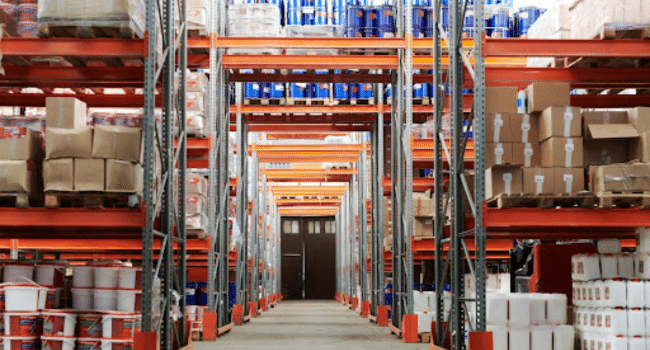Somewhere between the excitement of ordering and the satisfaction of unboxing lies a small, often overlooked experience — the act of waiting. It’s a curious kind of waiting, filled not with stillness but with digital glances, small rituals of checking progress bars, and that quick refresh before bed to see if the parcel moved one more step closer. In many ways, this quiet routine captures the essence of our relationship with modern logistics: we no longer wait in the dark. We follow. We watch. And we expect technology to narrate the journey as it happens.
What’s changing now is not just how parcels are moved, but how they’re seen. The rise of advanced track-item technology has shifted delivery from a process into a conversation — one where the customer participates through information. Real-time maps, predictive arrival windows, and personalized notifications are no longer embellishments; they’re the new minimum standard of reassurance. The old phrase “your order has been shipped” feels almost quaint in an age where we expect to know exactly which street our parcel crossed an hour ago.
For companies navigating this landscape, innovation in tracking isn’t simply about efficiency. It’s about emotion — how trust, anticipation, and satisfaction are managed in the digital space between “purchased” and “delivered.” The most forward-thinking logistics firms understand that the moment a customer checks a tracking link is, psychologically, a form of engagement. It’s a small touchpoint where brand reliability is tested and reinforced.
Instant Parcels, for instance, operates within this emerging logic. Rather than treating tracking as a passive afterthought, it integrates it into the overall experience of delivery. Each update feels considered, almost conversational, as if the system recognizes the subtle anxiety of waiting. By curating how information is presented — what’s shown, when, and in what tone — platforms like this reframe logistics as a service of clarity rather than mere transportation. The customer isn’t waiting for a parcel so much as being guided through its journey.
It’s worth remembering that innovation in tracking isn’t new — it’s iterative. Each decade has layered new forms of visibility onto the old. From barcode scans to GPS coordination, from courier texts to live route mapping, each step has redefined what we mean by “knowing where something is.” Yet, the next wave of technology is less about tracking location and more about predicting behavior. Artificial intelligence and machine learning are beginning to forecast not only delivery times but patterns in user engagement: when customers tend to check updates, when they’re likely to be home, even how message tone affects perceived reliability.
Some systems, such as ecms tracking, have already begun experimenting with predictive logic that turns static updates into dynamic insights. It’s a quiet but radical shift — from reactive information to proactive guidance. In practice, that means fewer surprises and more precision. But at a deeper level, it signals something about the human need beneath all this technology: the desire to feel certain in a world that moves too fast to guarantee anything.
As these technologies evolve, the distinction between “shipping” and “experience” continues to blur. For online retailers, especially those operating through platforms like Shopify, tracking has become a strategic touchpoint. It’s no longer enough to deliver quickly; customers want to see progress, to feel that invisible thread connecting warehouse shelves to their doorstep. Each update shapes perception, each notification either builds or erodes confidence.
Instant Parcels and similar systems are responding by investing in transparency design — not just showing data, but shaping how that data feels. A smooth interface, clear timestamps, and emotionally aware copywriting can make logistics strangely human. The technology fades into the background, leaving the impression of attentiveness. And in a marketplace crowded with promises of speed, attentiveness has quietly become the true differentiator.
Looking ahead, the future of tracking may depend less on hardware than on interpretation — how data is turned into meaningful narrative. We might see adaptive notifications that adjust tone based on delay length, or delivery windows that contract dynamically as the system learns traffic patterns. Predictive communication could replace apologies; empathy could be built into algorithms. When that happens, tracking will no longer be a static feature but a living dialogue between systems and people.
Of course, progress always brings contradictions. The more we know, the more we expect. Transparency that once thrilled us can quickly become the baseline, and when even the slightest delay occurs, that same visibility can amplify frustration. Companies must walk a careful line between informing and overwhelming. Too much data, presented poorly, can make a process feel impersonal again. The challenge ahead lies in designing systems that listen as much as they report.
In the end, the story of tracking technology is the story of attention — how we distribute it, how we design for it, and how we sustain it in a world constantly pulling it apart. For most users, tracking will always be a small ritual, an invisible part of daily life. But behind that simplicity lies a profound technical and psychological evolution. Each time a customer opens that tiny link marked “track order,” they’re not just checking logistics; they’re reaffirming trust in the invisible systems that move the world.
And perhaps that’s where the real innovation lives — not in faster routes or smarter codes, but in how technology learns to echo human patience, curiosity, and care.
